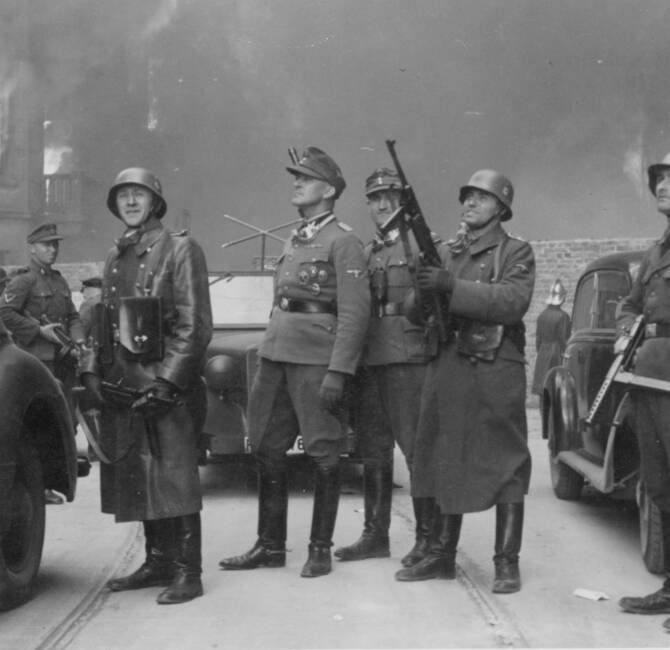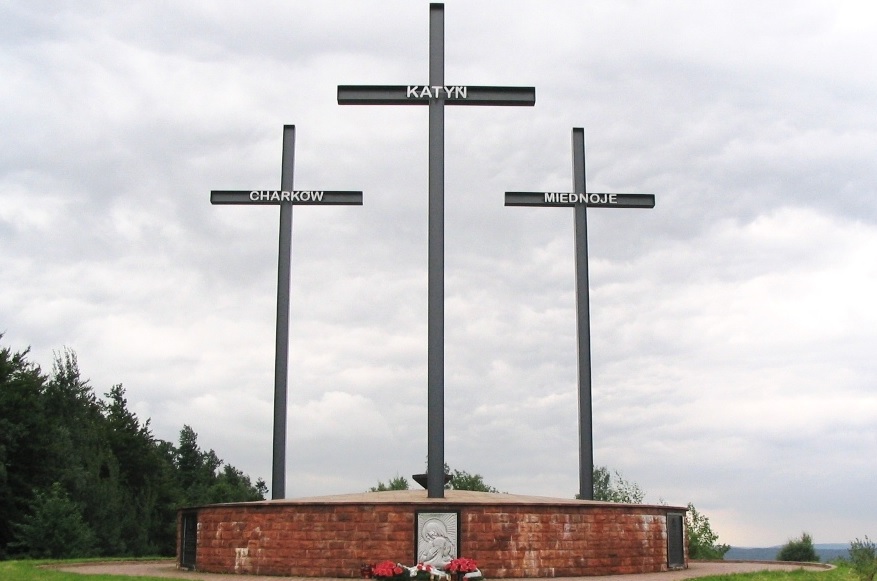By Marlena Prochownik.
Poland – Christmas (“Boże Narodzenie” – literally “God’s Birth”) is considered the most important holiday in Poland. Its traditions have evolved over the centuries, during which pagan, folk and Christian customs intertwined with each other. Let’s have a look at some Polish Christmas traditions.


Christmas Eve (“Wigilia”) is the day preceding the Christmas day. It’s not an official public holiday, so for most Poles it’s a working day until the afternoon. Poles fast throughout the day and then in the evening whole families meet to eat a sumptuous supper and celebrate together.
According to tradition the supper starts when the first star appears in the evening sky. This is a symbolic reference to the Bethlehem Star announcing the birth of Jesus Christ, which, according to the Bible, led the Three Kings to the stable where they found Jesus. Usually, the Polish children impatiently wait and search the sky for this star, while adults finish the meal preparations.
The supper starts by breaking bread with everyone present (or wafers “opłatek”) and wishing each other all the best. This custom seems to be common only in Poland, Lithuania and Slovakia. The wafers are stamped with religious images such as the nativity scene.

Finally on the midnight of the 24th of December Poles traditionally attend the solemn Holy Mass, which is called Pasterka. The Pasterka commemorates waiting and prayer of the shepherds who headed to Bethlehem to see the baby Jesus – word “pasterka” comes from the word “pasterz”, which means a shepherd.
A kind of hallmark of Polish Christmas is a sumptuous table. The dishes on it may differ depending on the region of the country, but what is common everywhere – there must be twelve dishes. According to tradition everyone has to taste each one of the dishes to assure that each of the new year’s months will be prosperous.
Decorations such as candles and wooden ornaments are welcome on the Christmas table as well. It’s also very common to put some hay under the white table cloth – to remember that Jesus Christ was born in a stable.
No one should be alone and abandoned on Christmas, that’s why according to tradition we put an additional set of tableware on the table – for an unexpected guest. Leaving an empty seat seems to be one of the most important Polish Christmas traditions. In pagan times people left an empty seat for those who passed away, now it’s dedicated to wanderers who might knock on your door. It can also be associated with the idea of Christian (and Polish!) hospitality. When supper is over people in Podlasie (north-east Poland) region don’t immediately clean up the table, so that – as the tradition says – the souls of the dead could have the leftovers.
Depending on the region and family tradition, the set of Christmas Eve dishes can be miscellaneous in different homes. The most common are: beetroot soup with dumplings (“barszcz czerwony” with – literally – “little ears”), various fish (Poles don’t eat meat on Christmas Eve), cabbage with peas, dumplings. We drink dried fruit compote and eat lots of various cakes, among them gingerbreads (“pierniki”) and poppy-seed cake (“makowiec”). According to the belief of some people of Silesia, only things that come from the forest, fields, gardens, water and orchards can be found on the Christmas Eve dinner table.

No one nowadays can imagine Christmas without a Christmas tree (“choinka”). The custom of dressing it appeared in Poland in the 18th century and came from Germany. Adorned with baubles, lights, chains and candy, Christmas trees – natural or artificial, big or tiny – are a “must be” in each home. In old times Christmas trees were decorated with gingerbread, nuts, little apples, cereals and with hand-made paper chains or decorations. According to tradition the tree should be dressed together by the whole family on Christmas Eve, but nowadays it’s usually done earlier by children. Christmas trees stay in our homes up to the 6th of January – the Epiphany, or to 2nd February – The Presentation of Jesus at the Temple.
If there is a Christmas tree, there must be presents under it as well. In Poland we give and receive gifts twice – on the 6th and the 24th of December. On the first date it’s Saint Nicholas who arrives to bring gifts to well-behaved children. Rude children get a “rod” (rózga). The situation is clear and agreed upon here.

But not so when it comes to the gifts on Christmas Eve. Under the Christmas tree there are presents brought – depending on the region – by the Little Angel, Baby Jesus, Star-man… This is due to different regional traditions as well as a remnant of the 120 years of partitions, during which the Polish nation was divided among three countries. Read the following basic comparison and have a look at the map to learn about this regional diversity.
- Saint Nicholas (“Święty Mikołaj”) – visits people in central, north-east, west and south-east Poland, although most of us associate him with the 6th of December.
- Little Angel (“Aniołek”) – in Lesser Poland (Małopolska), Podkarpacie (the most south-east region of our country) and the surrounding areas (southern Poland in general) regions he is the most common gift-giver. Little Angel also visits Slovakia and Hungary.
- Little Baby Jesus (“Dzieciątko”) – typical for Silesian region, this custom came from Czech Republic. Saint Nicholas visits them on the 6th of December.
- Little Star (“Gwiazdka”) – in Lower Silesia. Sounds credible – after all Christmas Eve starts when this star has been spotted….
- Star-man (“Gwiazdor”) – in Poznań and surrounding areas, on the Lubusz Land, Kujawy and Warmia (territories which were under Prussian rule during partitions), Kashubia and Kociewie. “Gwiazdor” just like Saint Nicholas is asking if someone was naughty or nice – the naughty receive a rotten “pyra” (“potato” in Poznań dialect).
- Grandfather Frost (“Dziadek Mróz”) – there are still places where it’s him who leaves gifts under the Christmas tree, as he did in the Eastern Block countries before 1989. His roots are in Western-Slavic tradition (see Russian Дед Мороз). Attention – he visits our compatriots in eastern borderlands (Kresy Wschodnie, today’s Ukraine, Belarus and Lithuania).

To describe presents we received on the Christmas Eve – no matter if we got them from a Star-man or Little Angel – we say we got it (from) “under the Christmas tree” (“pod choinkę”) or “on the occasion of a little star” (“na Gwiazdkę”).
There are many superstitions related to Christmas, which have origin in the ancient local pagan beliefs. Leaving a vacant seat at the table, which refers to belief in the arrival of the souls of the dead, for the unknown guest was already mentioned. People believe that anxiety and quarrels on that special day can call out misfortunes, and, according to my mum’s words: don’t quarrel on Christmas Eve or you’ll be quarrelling throughout the whole next year.
A whole article could be written about the colorful folklore of Polish highlanders and their Christmas traditions. Let’s say a few words about them as well. In Podhale girdling the Christmas table with a chain guarantees that none of the guests will leave the family in the upcoming year, and that animals won’t move away from the farm. Be careful about your spoon – if it falls off the table there will be death in the family. The number of spoons is also important, there should be exactly as many spoons as there are guests. One too much – heralds birth, one missing – heralds death.
An interesting custom from Upper Silesia for single ladies – according to tradition, on Christmas Eve every girl should go outside at midnight and listen to the side from which a dog barks. This is where the girl’s fiancé will come from…
Some of us leave carp skin in the wallet to bring luck or money. In some regions a coin is often put in one of the borscht dumplings – whoever finds it on his plate will have luck.
An important habit accompanying Christmas is singing carols, which are very popular in our country – nowadays especially in modern versions sang by well-known musicians and bands, but also in folk style.

It seems that nowadays Christmas has a more traditional than religious character. For some it’s even more of a mainstream commercial holiday, which has nothing in common with religion or tradition. As soon as the All Saints’ Day with its typical candles and wreaths is gone shopping centres “attack us” with images of Santa Claus and gifts. When radio stations start playing “Last Christmas” by Wham! we already know that Christmas time is coming. We’re not so concerned anymore about who will bring presents because pop culture has accustomed us to the image of Santa Claus, who seems to have a monopoly on gift-giving.
But this could be said about every modern European society. Random Poles probably would agree that there is some truth in this, but wouldn’t consider it as a something positive. Even if we’re not as religious as we used to be, we still follow most of our traditions and Christmas holidays are still the most important days in the year, spent with family in a peaceful atmosphere.



